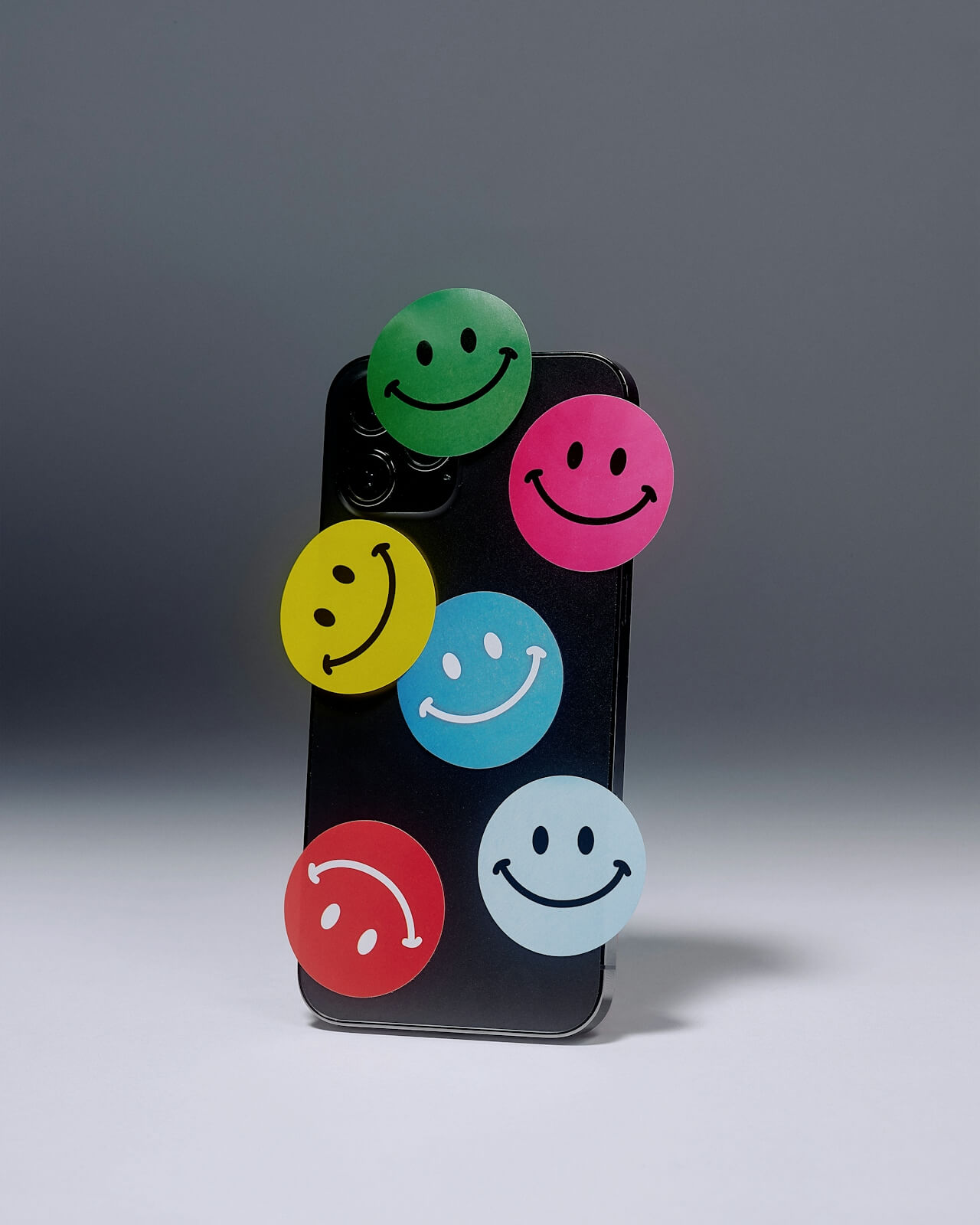Most founders think branding agencies just design logos. That's like saying architects only draw floor plans. A branding agency builds the strategic and visual foundation that shapes how customers perceive your company, influences buying decisions, and creates lasting competitive advantages. Understanding what these agencies actually deliver helps you evaluate whether you need one and what to expect from the engagement.
The confusion around what branding agencies do stems from how the term "branding" gets used loosely to describe everything from logo design to marketing campaigns. Professional branding agencies do far more than create visual assets. They solve fundamental business problems about positioning, differentiation, and how companies communicate value in competitive markets.
What Strategic Work Happens Before Design
The most valuable work branding agencies perform happens before any visual design begins. Strategic foundation establishes why your company exists, who it serves, how it's different, and what it stands for. This clarity guides every subsequent decision about visual identity, messaging, and brand expression.
Brand strategy development starts with research. Agencies examine your competitive landscape, interview customers and stakeholders, analyze market dynamics, and assess current brand perception. This investigation reveals opportunities for differentiation and validates assumptions about what actually matters to your target audiences.
Positioning work distills strategic insights into clear statements about what your company does, who it's for, and why it matters. Effective positioning creates distinction in crowded markets by identifying specific dimensions where you can credibly claim superiority. This isn't about inventing advantages—it's about articulating real differences in ways that resonate with target customers.
Messaging architecture extends positioning into comprehensive frameworks covering value propositions, key messages for different audiences, proof points supporting claims, and responses to common objections. These verbal systems ensure consistent communication across all touchpoints from websites to sales conversations.
Brand personality definition establishes human characteristics your brand should embody. Are you authoritative or approachable? Playful or serious? Sophisticated or accessible? These personality traits guide tone of voice, visual style, and every interaction customers have with your company. Without clear personality, brands feel generic and forgettable.
This strategic work creates alignment within organizations about who you are and what you stand for. It prevents the common situation where marketing says one thing, sales says another, and product communicates something entirely different. Strategic clarity enables coherent brand experiences.
Visual Identity Development Creates Recognition
Once strategic foundations are established, visual identity work translates positioning into visual language. This is where logos, colors, typography, and imagery come together into systems that create recognition and communicate brand personality visually.
Logo design receives disproportionate attention but represents just one element of comprehensive visual identity. Effective logos work as recognition devices while communicating something essential about the company. They must function across all necessary contexts from tiny favicons to large signage, in color and black-and-white, on various backgrounds and materials.
Color systems extend beyond single brand colors into comprehensive palettes with primary colors, secondary options, and usage principles. Strategic color choices communicate personality—bold reds feel energetic, deep blues convey stability, greens signal growth or sustainability. Professional agencies make informed color decisions considering both aesthetic preference and psychological impact.
Typography selections establish how your brand uses type across applications. Primary typefaces for headlines, secondary options for body copy, and usage guidelines create typographic consistency. Typography choices significantly impact brand perception—geometric sans-serifs feel modern and clean, serifs communicate tradition and authority, distinctive display faces create personality.
Imagery approaches define what kinds of photography, illustration, or graphics represent your brand. Should images be aspirational or documentary? Colorful or muted? People-focused or abstract? These decisions ensure visual consistency across all brand applications from websites to advertising.
Visual system integration connects all elements into coherent language. Color, typography, imagery, and composition principles work together creating distinctive expressions that customers recognize immediately. This systematization prevents visual chaos as brand usage expands across many contexts.
Brand System Documentation Enables Consistency
Creating brand strategy and visual identity is valuable, but without proper documentation, consistency erodes quickly. Brand guidelines provide the reference materials teams need to maintain brand coherence as usage expands beyond initial applications.
Comprehensive brand guidelines document strategic foundations including positioning statements, brand personality descriptions, key messages, and voice and tone principles. These strategic elements guide how everyone from customer service to executive leadership talks about the company.
Visual standards specify exactly how identity elements should be used. Logo variations, size requirements, spacing rules, color specifications, typography systems, and imagery guidelines ensure visual consistency across all applications. These technical specifications prevent well-intentioned but inconsistent usage that dilutes brand impact.
Application examples demonstrate how brand systems work in practice across common touchpoints. Website designs, business cards, presentations, advertising, packaging, and environmental applications show how principles translate into real-world usage. These examples inspire teams while establishing quality expectations.
Usage guidelines clarify what not to do as much as what to do. Common mistakes, prohibited modifications, and misuse examples help prevent brand dilution. Clear prohibitions protect brand integrity without requiring constant approval for every application.
Living documentation acknowledges that brands evolve. Professional brand guidelines include processes for requesting additions, clarifications, or evolution to accommodate business growth. This flexibility prevents guidelines from becoming rigid constraints that hold businesses back.
Website and Digital Implementation Brings Brands to Life
For most companies today, websites serve as primary brand touchpoint where customers form first impressions and make evaluation decisions. Web design and development that implements brand systems effectively determines whether strategic brand work translates into actual customer experiences.
Many branding agencies offer integrated services covering both brand development and website implementation. This integration ensures brand expression remains consistent from strategic positioning through actual customer interactions. When brand development and web design happen separately, disconnects often emerge requiring expensive reconciliation.
Strategic alignment ensures websites communicate positioning clearly. Value propositions established during brand strategy need prominent expression in web design. Navigation structures should reflect how target customers think about solutions, not internal organizational structures. Content hierarchy must emphasize what matters most to audiences.
Visual brand implementation applies identity systems to web interfaces. Color, typography, imagery, and composition principles guide how websites look and feel. This application creates recognizable brand experiences while serving functional requirements like readability, usability, and conversion optimization.
Interaction design extends brand personality into how websites respond to user actions. Animation timing, transition behaviors, and micro-interactions all communicate brand character. Quick, snappy interactions feel energetic and efficient. Slow, deliberate transitions convey sophistication and intentionality. These details shape brand perception subtly but significantly.
Technical quality reflects brand values whether explicitly considered or not. Fast-loading, reliable websites signal competence and attention to detail. Slow, buggy experiences undermine brand credibility regardless of how beautiful visual design appears. Professional implementation ensures brand promises aren't contradicted by technical shortcomings.
Ongoing Brand Management and Evolution
Branding agencies don't just create brand systems and disappear. The best partnerships include ongoing support ensuring brands remain consistent, relevant, and effective as businesses evolve.
Brand governance establishes processes and responsibilities for maintaining brand standards. Who approves major brand applications? How do teams request guidance? What level of variation is acceptable? Clear governance prevents both chaos from inconsistent usage and paralysis from over-control requiring approval for every minor decision.
Brand audits periodically assess how brands are being used across all touchpoints. These systematic reviews identify inconsistencies, outdated applications, and opportunities for improvement. Regular audits prevent gradual erosion of brand standards that occurs when no one monitors implementation systematically.
Expansion support helps brands adapt to new products, markets, or business models without requiring complete rebuilds. Professional brand systems include flexibility for evolution. Agencies help organizations extend existing brand architecture to new contexts while maintaining coherence with established identity.
Performance evaluation examines whether brands are achieving intended business outcomes. Are you attracting target customers? Does positioning resonate in market? Are conversion rates improving? Measurement connects brand investment to business results, justifying continued investment and identifying refinement opportunities.
Strategic refresh recommendations help organizations recognize when evolution becomes necessary. Markets change, companies grow, and brands need updating to remain relevant. Agencies with ongoing relationships provide perspective about when refinement serves versus when comprehensive rebranding makes sense.
How Branding Agencies Structure Engagements
Understanding typical engagement structures helps set realistic expectations about process, timeline, and deliverables when working with branding agencies.
Comprehensive brand development typically follows phased approaches. Discovery and research establish foundations. Strategy development defines positioning and messaging. Visual identity creates design systems. Implementation applies brands to priority touchpoints. Documentation ensures consistency. This sequential process typically spans eight to sixteen weeks depending on complexity.
Focused engagements address specific needs without full comprehensive branding. Visual identity refresh updates logos and design systems without strategic repositioning. Messaging development clarifies positioning without visual work. Website design implements existing brands digitally. These focused projects serve companies with clear scope and specific needs.
Retainer relationships provide ongoing support for brand management, expansion, and evolution. Monthly fees cover guidance, application development, and periodic strategy refreshes. This model serves growing companies needing continuous brand support rather than discrete projects.
Workshop facilitation helps internal teams develop brand strategy collaboratively. Agencies design and lead strategic sessions that engage stakeholders in positioning, personality, and messaging development. This collaborative approach builds internal ownership while benefiting from agency expertise facilitating process.
Brand audits and consultations provide assessment and recommendations without full implementation. Agencies evaluate current brand effectiveness, identify opportunities, and suggest improvements organizations can implement internally or through separate engagements. This consulting approach serves companies needing direction more than execution.
What Branding Agencies Don't Do
Clarifying boundaries helps prevent mismatched expectations about what branding agencies deliver versus what requires different specialized expertise.
Marketing execution beyond brand development typically falls outside branding agency scope. Advertising campaigns, content marketing, social media management, and performance marketing require different capabilities than brand strategy and design. Some full-service agencies offer these services, but specialized branding agencies focus on foundational brand work.
Product development and industrial design are separate disciplines. While brand thinking informs product decisions, actually designing physical products requires engineering and industrial design expertise beyond brand agency capabilities. Clear boundaries prevent confusion about responsibilities.
Public relations and media outreach need specialized PR capabilities. Branding agencies develop messaging platforms and brand stories, but pitching media, managing press relationships, and crisis communications require PR expertise. These disciplines complement but don't replace each other.
Sales enablement and training extend beyond typical brand agency scope. While agencies develop brand positioning and messaging that sales teams use, actually training sales organizations and creating detailed sales processes requires sales enablement expertise.
Technology platform selection and implementation aren't brand agency core capabilities. Agencies might recommend platforms for websites or brand management, but technical implementation, ongoing hosting, and system administration typically require technical partners or internal IT resources.
Evaluating Whether You Need a Branding Agency
Not every company needs professional branding agency services. Understanding when this investment makes sense versus when alternatives serve effectively helps make informed decisions.
Complex positioning challenges justify strategic branding investment. When you're entering crowded markets, targeting sophisticated audiences, or differentiating from similar alternatives, professional positioning creates competitive advantages. Generic approaches don't cut through in competitive environments.
Growth ambitions that require scaling beyond current scope benefit from systematic brand foundations. If you plan significant expansion, professional brand systems prevent chaos as usage multiplies. Investing appropriately early prevents expensive rebuilds when inconsistency becomes problematic.
Customer acquisition costs that consume disproportionate resources often improve through better branding. Professional brands convert more effectively because they build trust and communicate value clearly. If marketing struggles with conversion, branding investment might improve efficiency enough to justify costs.
Premium positioning requires design quality matching price points. If you charge premium prices, amateur branding undermines credibility. Design quality must align with positioning to prevent disconnect between claimed value and perceived quality.
However, very early-stage companies without product-market fit should prioritize validation over sophisticated branding. Get initial customers, validate assumptions, and establish viability before investing heavily in branding. Premature branding optimizes for positioning that may change dramatically as you learn.
Understanding what branding agencies actually deliver—strategic positioning, visual identity systems, brand guidelines, and often digital implementation—helps founders evaluate whether this investment serves their specific situation. The right agency partnership creates brand foundations that drive growth, while premature or inappropriate branding investment consumes resources better allocated elsewhere.
Want to build a powerful startup brand? Get a free quote from Metabrand.










